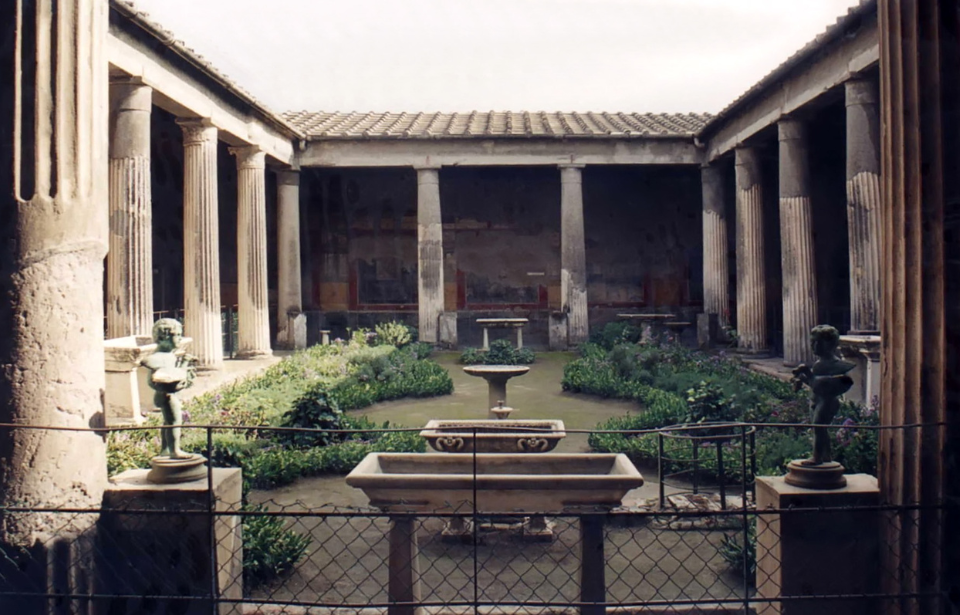After 20 years of restoration, the Casa dei Vettii reopened to the public in 2023. The house is one of the largest in the Archaeological Park of Pompeii and was, like the rest of the city, completely buried under ash following the eruption of Mount Vesuvius. Following years of hard, detailed, and delicate work, the property was returned to its former glory, with frescoes and statues still intact.
The previous owners went from rags to riches
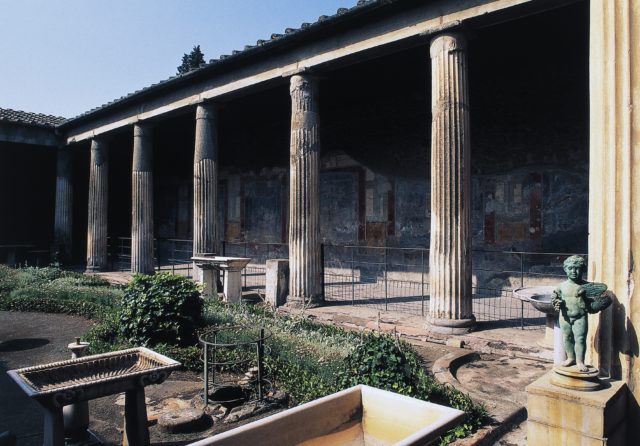
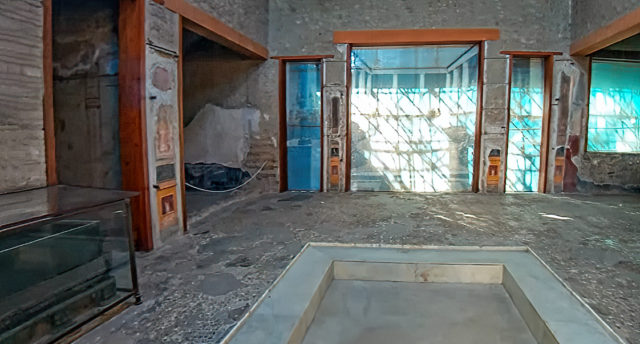
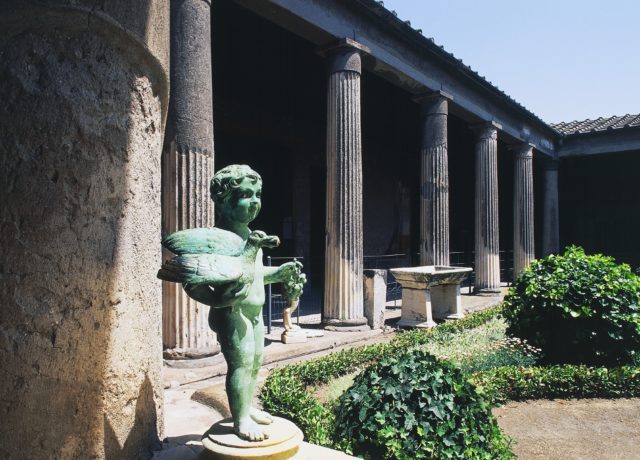
Casa dei Vettii is a domus of the Roman era, built in the second century BC. It was owned by two Pompeiian men named Aulus Vettius Restitutus and Aulus Vettius Conviva. The two men were once enslaved but were eventually freed and able to establish lives for themselves. They found success through wine and agricultural business ventures and became rich enough to build the incredible house. The men dramatically turned their lives around, with one becoming a member of the college of Augustali and the other a candidate for the position of aedile (an official of the Roman Republic).
The house was known as one of the richest and most popular houses in Pompeii, and the god of prosperity, Priapus, was painted at the entrance to symbolize the economic fortune of its owners. In 79 AD, Mount Vesuvius erupted and buried the entire city under a layer of volcanic ash. The city, including Casa dei Vettii, remained well preserved under the ash and was rediscovered in the 19th century.
The Archaeological Park of Pompeii has been the home of restoration as professionals attempt to unearth what was hidden beneath the ash. As such, the Casa dei Vettii was closed to the public for two decades.
The layout of the Casa dei Vettii
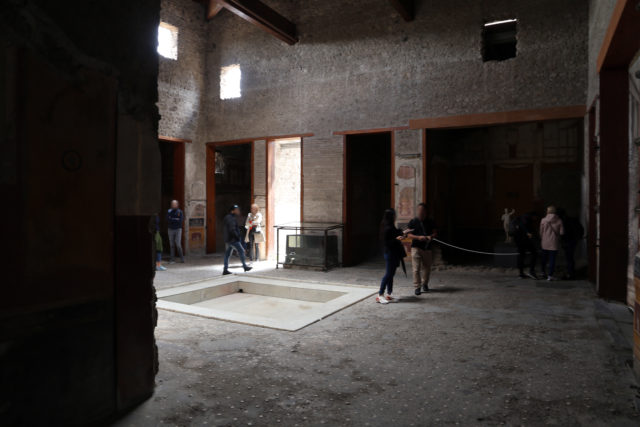
The Casa dei Vettii spans over 1100 square meters and is located near the Vesuvian Gate. It’s bordered by the Vicolo dei Vettii and the Vicolo di Mercurio, which provide the main entrances to the house from the east and the south, respectively.
The house is divided into five major sections that include the large atrium, small atrium, large peristyle, small peristyle, and the shop. The large atrium is surrounded by four cubicula, or bedrooms, likely belonging to the owners of the house, as well as a formal dining area called the triclinium. The small atrium is also surrounded by four rooms but is believed to have belonged to the servants who worked in the house or as storage rooms.
The house also features a large garden which is visible when looking through the main entrance and through the large atrium. A curious feature unique to the Casa dei Vettii is the lack of a tablinum on the property, which was a room usually positioned between the atrium and the peristyle and used for storing family records.
The restoration has brought the art back to its former glory
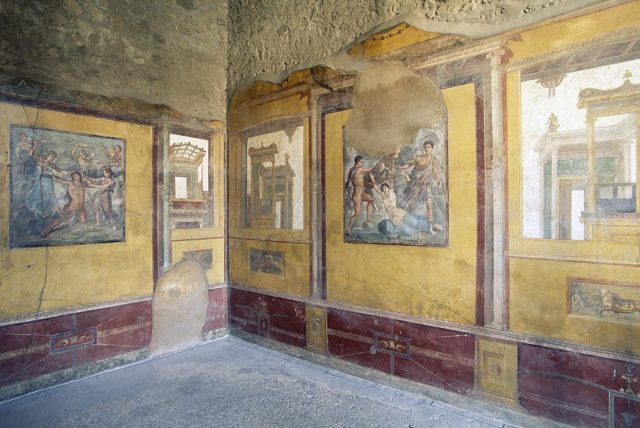
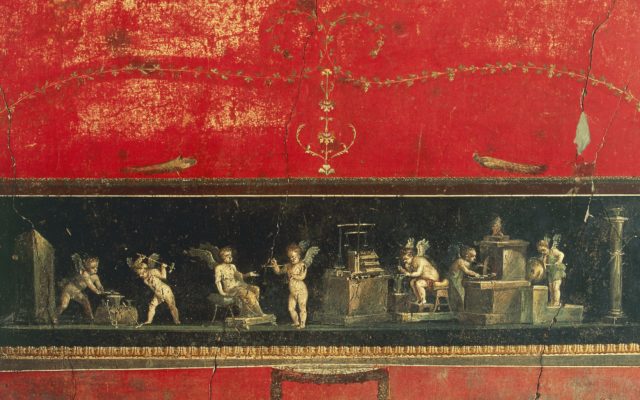
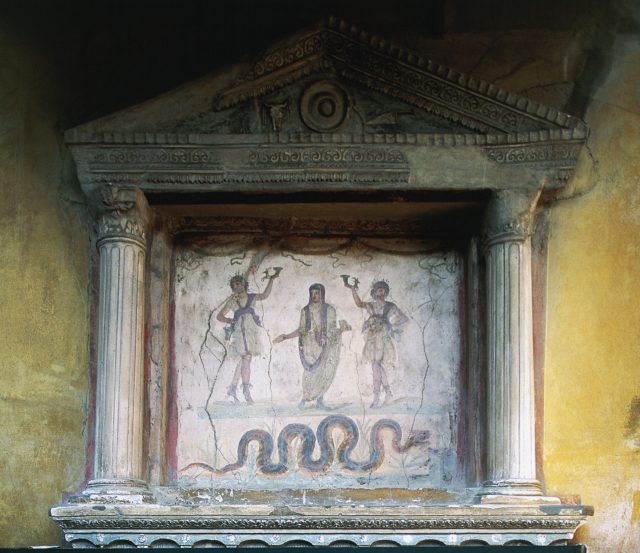
The restoration of the house involved the revival of several ancient art pieces, statues, and frescoes that were scattered throughout the Casa dei Vettii. The director of the Archaeological Park, Gabriel Zuchtriegel, has called the house the “Sistine Chapel of Pompeii,” as the entire property is adorned with remarkable frescoes depicting different mythological and erotic scenes.
Thankfully, the blanket of volcanic ash that covered the frescoes helped to preserve them for centuries. One of the most famous is the depiction of Priapus, which showcases his extremely large appendage balanced on a pair of scales. In addition to this, fertility statues and other artifacts have been restored around the property. The water pipes and fountains that were features of the garden have been restored, but the statues that once stood there have been relocated indoors to help preserve them better. Copies are situated in their former places outside.
More from us: Why is Scotland’s Historic Hill House Covered in Chainmail?
In 2002, a restoration team began the laborious task of returning the house to its former glory. In 2016, the task was handed over to a new director, Massimo Osanna, who led a team of archaeologists, restorers, structural engineers, and gardening experts to bring the house back to life. After 20 years, the home was finally reopened to the public who can now see for themselves the wealth and prosperity of its former owners.
